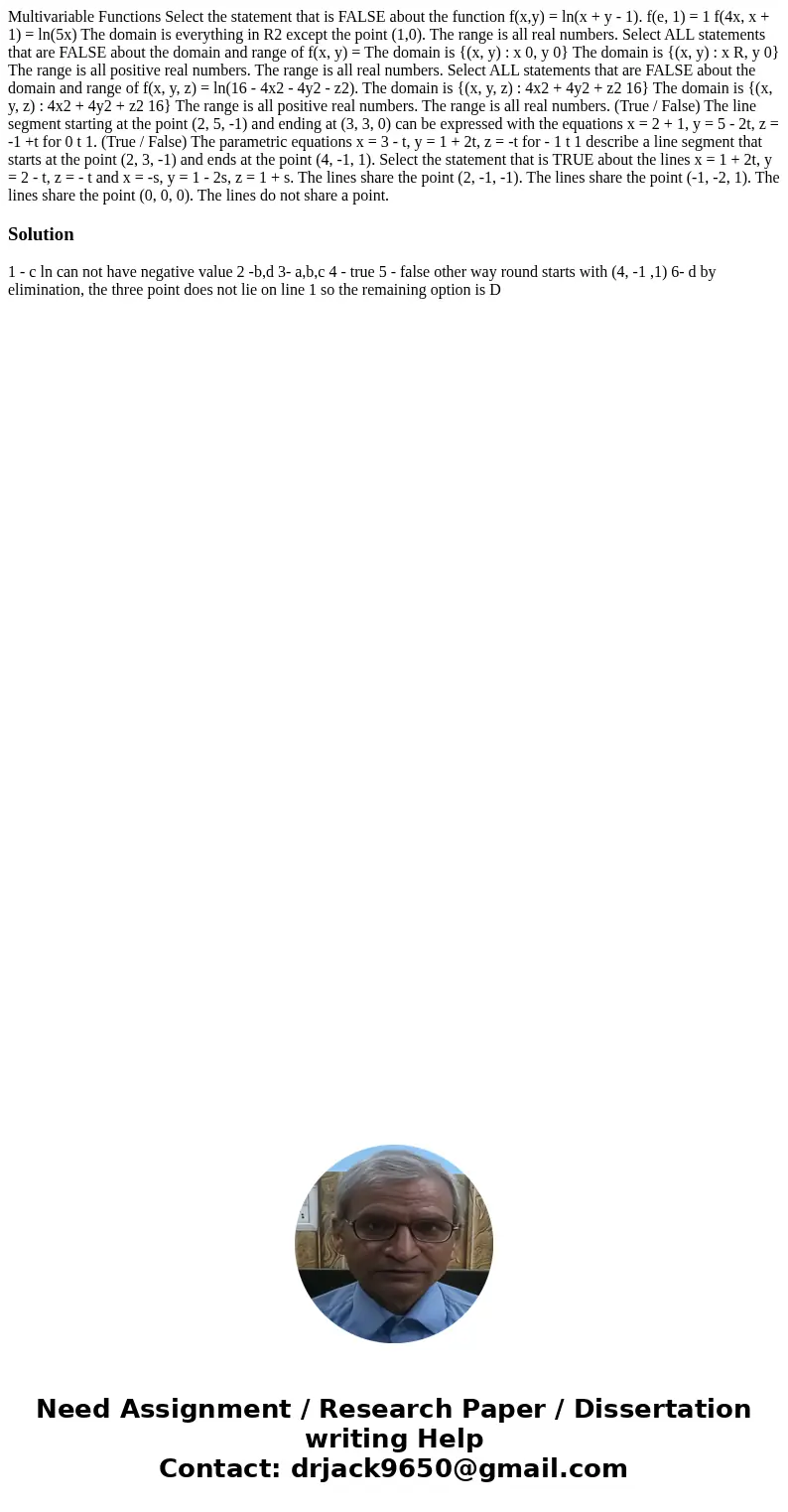Multivariable Functions Select the statement that is FALSE a
Multivariable Functions Select the statement that is FALSE about the function f(x,y) = ln(x + y - 1). f(e, 1) = 1 f(4x, x + 1) = ln(5x) The domain is everything in R2 except the point (1,0). The range is all real numbers. Select ALL statements that are FALSE about the domain and range of f(x, y) = The domain is {(x, y) : x 0, y 0} The domain is {(x, y) : x R, y 0} The range is all positive real numbers. The range is all real numbers. Select ALL statements that are FALSE about the domain and range of f(x, y, z) = ln(16 - 4x2 - 4y2 - z2). The domain is {(x, y, z) : 4x2 + 4y2 + z2 16} The domain is {(x, y, z) : 4x2 + 4y2 + z2 16} The range is all positive real numbers. The range is all real numbers. (True / False) The line segment starting at the point (2, 5, -1) and ending at (3, 3, 0) can be expressed with the equations x = 2 + 1, y = 5 - 2t, z = -1 +t for 0 t 1. (True / False) The parametric equations x = 3 - t, y = 1 + 2t, z = -t for - 1 t 1 describe a line segment that starts at the point (2, 3, -1) and ends at the point (4, -1, 1). Select the statement that is TRUE about the lines x = 1 + 2t, y = 2 - t, z = - t and x = -s, y = 1 - 2s, z = 1 + s. The lines share the point (2, -1, -1). The lines share the point (-1, -2, 1). The lines share the point (0, 0, 0). The lines do not share a point.
Solution
1 - c ln can not have negative value 2 -b,d 3- a,b,c 4 - true 5 - false other way round starts with (4, -1 ,1) 6- d by elimination, the three point does not lie on line 1 so the remaining option is D
 Homework Sourse
Homework Sourse